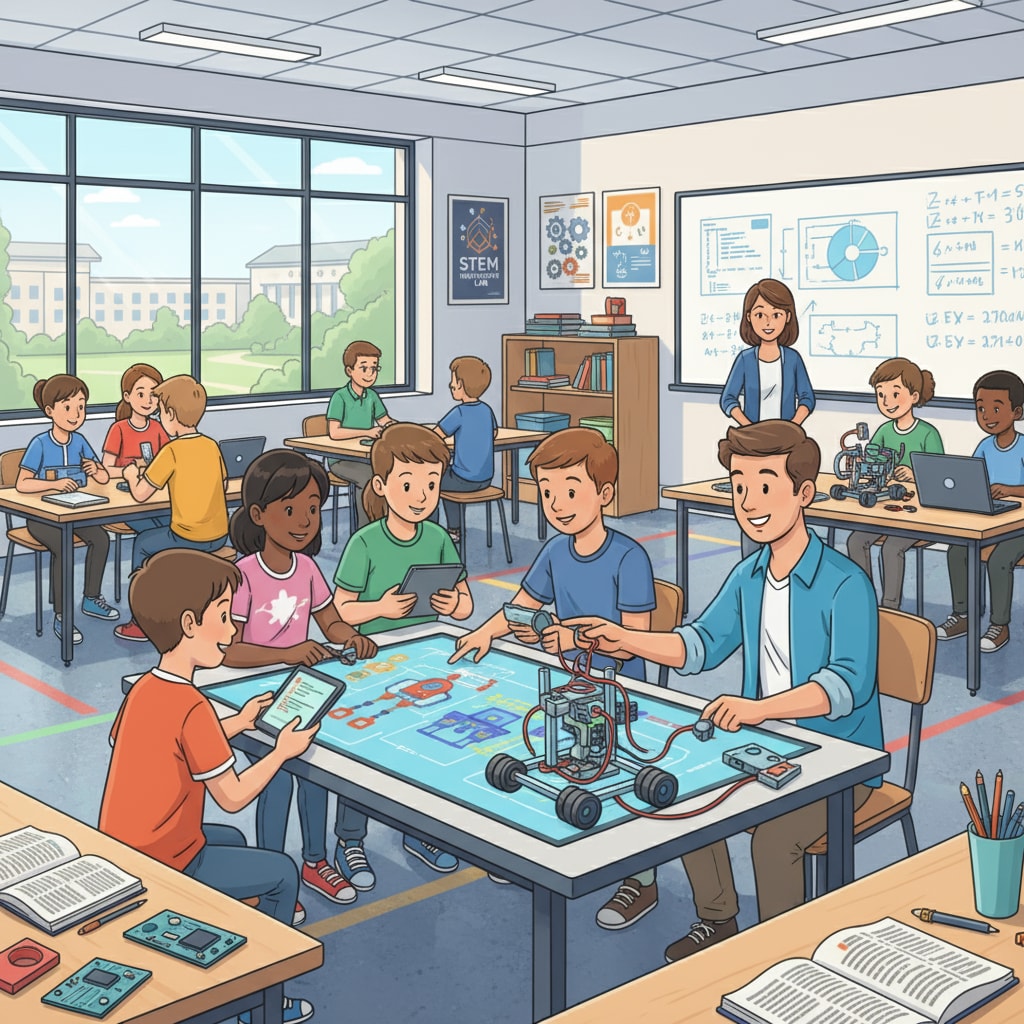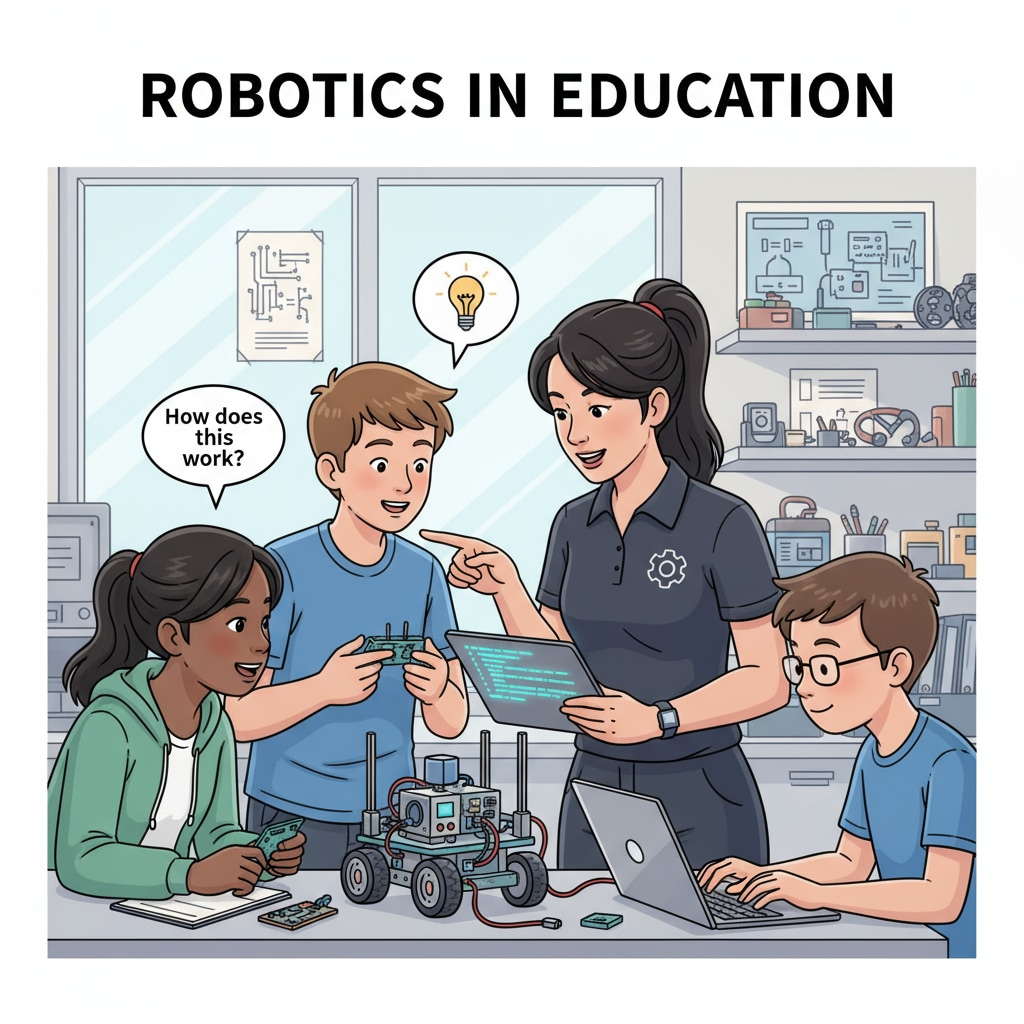STEM education, partnerships, and educational resources are integral to shaping the future of education. In today’s rapidly evolving world, the demand for a workforce with strong STEM skills is on the rise. To meet this need, innovative partnerships are emerging that bring together schools, businesses, and community organizations. These partnerships aim to provide students with real-world learning experiences that prepare them for the challenges of the 21st century.

The Power of Collaboration in STEM Education
Collaboration in STEM education is not just a buzzword; it’s a necessity. When schools, businesses, and community organizations work together, they can pool their resources and expertise. For example, businesses can offer internships, mentorship programs, and access to cutting-edge technologies. Community organizations can provide spaces for hands-on learning and real-world projects. This collaboration enriches the educational experience for students, giving them a broader perspective on STEM fields.

Resource Integration for Enhanced Learning
One of the key aspects of successful STEM education partnerships is resource integration. Schools often lack the financial resources and industry connections to provide students with the latest tools and experiences. By partnering with businesses and community organizations, they can gain access to a wealth of resources. This could include state-of-the-art laboratories, guest speakers from various industries, and educational materials. For instance, a local tech company might donate equipment to a school’s science lab, enabling students to conduct more advanced experiments. As a result, students are better equipped to understand and apply STEM concepts.
Another important aspect of resource integration is the sharing of human resources. Businesses can send their employees to schools as volunteer teachers or mentors. These professionals bring their real-world experience and knowledge to the classroom, making the learning more relevant and engaging. Community organizations can also play a role by organizing workshops and training sessions for teachers, helping them stay updated with the latest trends in STEM education.
Readability guidance: Here, we’ve used short paragraphs to convey key points about resource integration. The examples and transition words like “for instance” and “as a result” help make the text more understandable.
Curriculum Co-construction for Relevance
Curriculum co-construction is another vital element of effective STEM education partnerships. Schools, businesses, and community organizations can work together to develop curricula that are relevant to the current job market and real-world needs. Businesses can provide insights into the skills and knowledge required in their industries, while community organizations can offer context based on local needs and challenges.
For example, a partnership between a school, a local environmental organization, and a renewable energy company could result in a curriculum unit on sustainable energy. The company could provide information on the latest technologies and industry practices, the environmental organization could offer field trips and hands-on activities related to local environmental issues, and the school could incorporate these elements into its science curriculum. This way, students learn not only theoretical concepts but also how to apply them in practical situations.
Readability guidance: Short paragraphs and clear examples make the concept of curriculum co-construction easier to understand. The use of “for example” helps to illustrate the point effectively.
Practical Project Collaboration for Real-World Experience
Practical project collaboration is where the rubber meets the road in STEM education partnerships. By working on real-world projects, students get a taste of what it’s like to be in a professional STEM environment. Businesses can sponsor projects, provide mentorship, and offer feedback, while community organizations can help identify local problems that need solutions.
For instance, a group of students might work on a project to develop a mobile app for a local community center. The app could be designed to help the center manage its resources, schedule events, and communicate with its members. The students would work closely with the community center staff, as well as with mentors from a local tech company. This hands-on experience not only enhances their technical skills but also teaches them important soft skills such as teamwork, communication, and problem-solving.
Readability guidance: Using a simple example and short sentences makes the idea of practical project collaboration accessible. Transition words like “for instance” help to connect the ideas.
Key Strategies for Sustainable Partnerships
To ensure the long-term success of STEM education partnerships, several key strategies are essential. First, clear communication channels must be established among all partners. This includes regular meetings, shared online platforms, and open lines of communication. Second, there should be a shared vision and goals. All partners need to be on the same page regarding what they want to achieve through the partnership.
Third, evaluation and feedback mechanisms should be in place. This allows partners to assess the effectiveness of the partnership and make necessary adjustments. Fourth, incentives and recognition should be provided to encourage continued participation. For example, businesses could receive tax incentives or public recognition for their contributions to STEM education.
Readability guidance: A list format is used here to clearly present the key strategies for sustainable partnerships. This makes it easier for readers to follow and understand the important points.
In conclusion, STEM education partnerships offer a powerful way to prepare students for the future. By integrating resources, co-constructing curricula, and collaborating on practical projects, schools, businesses, and community organizations can create a dynamic learning environment. Implementing key strategies for sustainable partnerships will ensure that these collaborations continue to thrive and benefit generations to come. STEM education, partnerships, and educational resources are the building blocks of a brighter future in education. STEM education on Wikipedia The state of STEM education in 2020 on EdSurge


